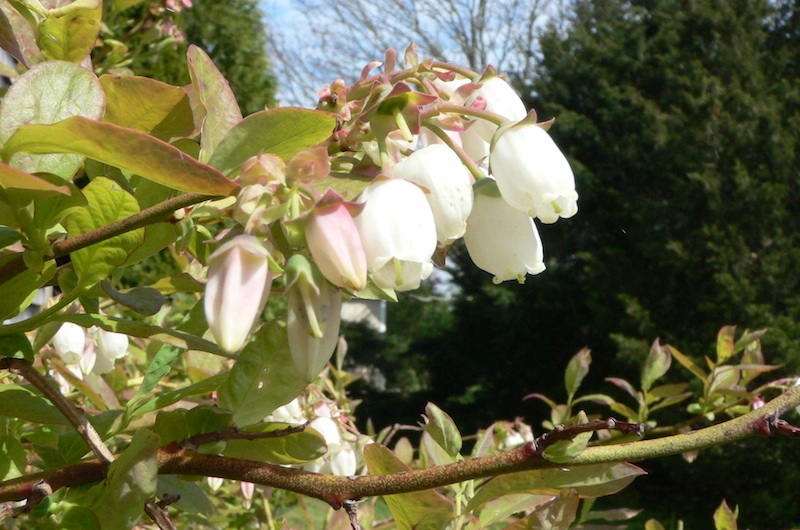For a shrub that works perfectly as a landscaping plant while also offering benefits for wildlife, consider the blueberry. Familiar to almost everyone, blueberries are perfectly adapted to Vineyard conditions. Four wild species occur here, with the most important distinction being between our two highbush blueberries (Vaccinium corymbosum and fuscatum) and our two lowbush species (V. angustifolium and pallidum). Countless blueberry cultivars have also been developed, with various fruit sizes and maturity dates, and are widely available on the commercial market.
Generally, the highbush species prefer wetter habitats (they’re often a major component in freshwater shrub swamps on the Island), with the lowbush species occurring widely on sandplain and as a woodland understory plant. But all blueberries tolerate poor, acidic soils with a wide range of grain sizes, characteristics which describe many locations on Martha’s Vineyard. Blueberries are an excellent choice when deciding how to re-vegetate disturbed and inhospitable areas on a property. Blueberries also work splendidly as hedges, foundation plantings, specimen plants, or when raised for their berries as a home or market crop.
In the wild, mature highbush blueberries can reach a height of 12 feet and can live for many decades, whereas mature lowbush blueberries only reach a maximum of about three feet (and are generally shorter). The leaves of the highbush have smooth edges, whereas the leaves of the lowbush are serrated like a breadknife. Both types of blueberries can be propagated from seeds or cuttings. However, the lowbush species are rhizomatous and can expand their coverage by sending sprouts up from their root system (making them a good way to add a woody component to a meadow). Blueberries bear a wealth of white, bell-shaped flowers in early spring. In fall, their leaves change to a dramatic red. And in between, they bear a crop (often a heavy one) of tasty berries sought after by humans and wildlife alike.
Blueberries flowers are one of the earliest nectar sources to appear on the Island, and they provide pollen and nectar to a wide range of early-season bees, butterflies and other insects (bumblebees in particular are fond of blueberry flowers). Blueberry fruits, appearing in early summer, support birds such as robins, waxwings, catbirds and towhees, and are presumed to have been a major food source for the now-extinct heath hen. You’ll probably need to cover your bushes with netting if want to beat the birds to the harvest.
For best results, blueberries should be grown in moist, acidic soil with a fairly high organic content and ample sun. Especially if you’re growing them for berries, blueberries may benefit from supplemental water if they’re in a dry location and exposed to full sun. But these plants are highly adaptable and we have had success growing highbush blueberries even in pure sand back-fill around a house foundation! Mulch around the base of the bushes helps keep them happy during hot summer weather. Blueberries are cold-hardy and rarely suffer any damage from a Vineyard winter. Despite the fondness of wildlife for blueberry fruit, blueberry leaves rarely suffer much insect damage — another advantage to using blueberries as part of your landscaping.
Perfectly adapted to Island soils and climate, offering both beauty and a desirable crop, and appreciated by a wide range of wildlife, blueberries belong in every Vineyard yard. It’s hard to think of a more versatile and useful plant.





Comments
Comment policy »